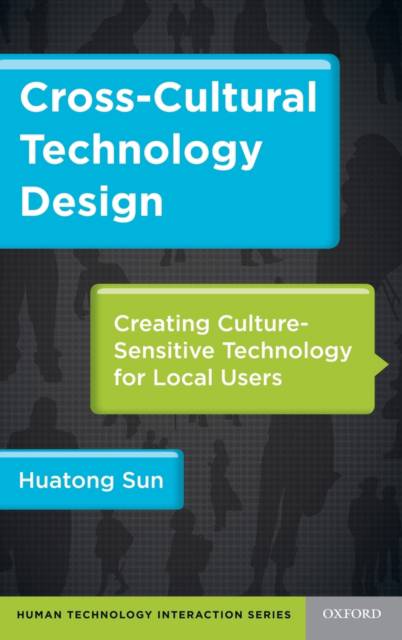
Je cadeautjes zeker op tijd in huis hebben voor de feestdagen? Kom langs in onze winkels en vind het perfecte geschenk!
- Afhalen na 1 uur in een winkel met voorraad
- Gratis thuislevering in België vanaf € 30
- Ruim aanbod met 7 miljoen producten
Je cadeautjes zeker op tijd in huis hebben voor de feestdagen? Kom langs in onze winkels en vind het perfecte geschenk!
- Afhalen na 1 uur in een winkel met voorraad
- Gratis thuislevering in België vanaf € 30
- Ruim aanbod met 7 miljoen producten
Zoeken
Cross-Cultural Technology Design
Creating Culture-Sensitive Technology for Local Users
Huatong (Assistant Professor, Interdisciplinary Arts & Sciences,
€ 92,45
+ 184 punten
Omschrijving
This book explores how to create culture-sensitive technology for local users in an increasingly globalized world with rising participatory culture. Illustrated with a cross-cultural study of mobile messaging use, Sun presents an innovative framework integrating action and meaning through a dialogical, cyclical design process to create usable and meaningful technology.
Specificaties
Betrokkenen
- Auteur(s):
- Uitgeverij:
Inhoud
- Aantal bladzijden:
- 352
- Reeks:
Eigenschappen
- Productcode (EAN):
- 9780199744763
- Verschijningsdatum:
- 15/03/2012
- Uitvoering:
- Hardcover
- Afmetingen:
- 240 mm x 161 mm
- Gewicht:
- 606 g

Alleen bij Standaard Boekhandel
+ 184 punten op je klantenkaart van Standaard Boekhandel
Beoordelingen
We publiceren alleen reviews die voldoen aan de voorwaarden voor reviews. Bekijk onze voorwaarden voor reviews.









